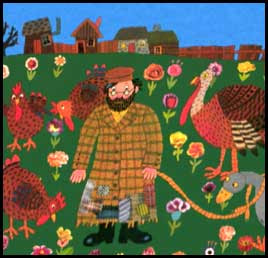The Caldecott Medal is awarded annually by the Association for Library Service to Children (ALSC), a division of the American Library Association, to the artist of the most distinguished American picture book for children published that year.
It was named in honor of nineteenth-century English illustrator Randolph Caldecott. Together with the Newbery Medal, it is the most prestigious American children's book award.
The Caldecott Medal was designed by Rene Paul Chambellan in 1937. The scene on the face of the medal is derived from Randolph Caldecott's illustrations for The Diverting Story of John Gilpin, in which Gilpin is astride a runaway horse. The story, in turn, was based on a poem from 1782 by William Cowper. The reverse of the medal depicts another of Caldecott's illustrations, "Four and twenty blackbirds bak'd in a pie."
The Caldecott Medal is not to be confused with the Caldecott Honor citation, which is conferred annually to worthy runners-up.
It was named in honor of nineteenth-century English illustrator Randolph Caldecott. Together with the Newbery Medal, it is the most prestigious American children's book award.
The Caldecott Medal was designed by Rene Paul Chambellan in 1937. The scene on the face of the medal is derived from Randolph Caldecott's illustrations for The Diverting Story of John Gilpin, in which Gilpin is astride a runaway horse. The story, in turn, was based on a poem from 1782 by William Cowper. The reverse of the medal depicts another of Caldecott's illustrations, "Four and twenty blackbirds bak'd in a pie."
The Caldecott Medal is not to be confused with the Caldecott Honor citation, which is conferred annually to worthy runners-up.

































